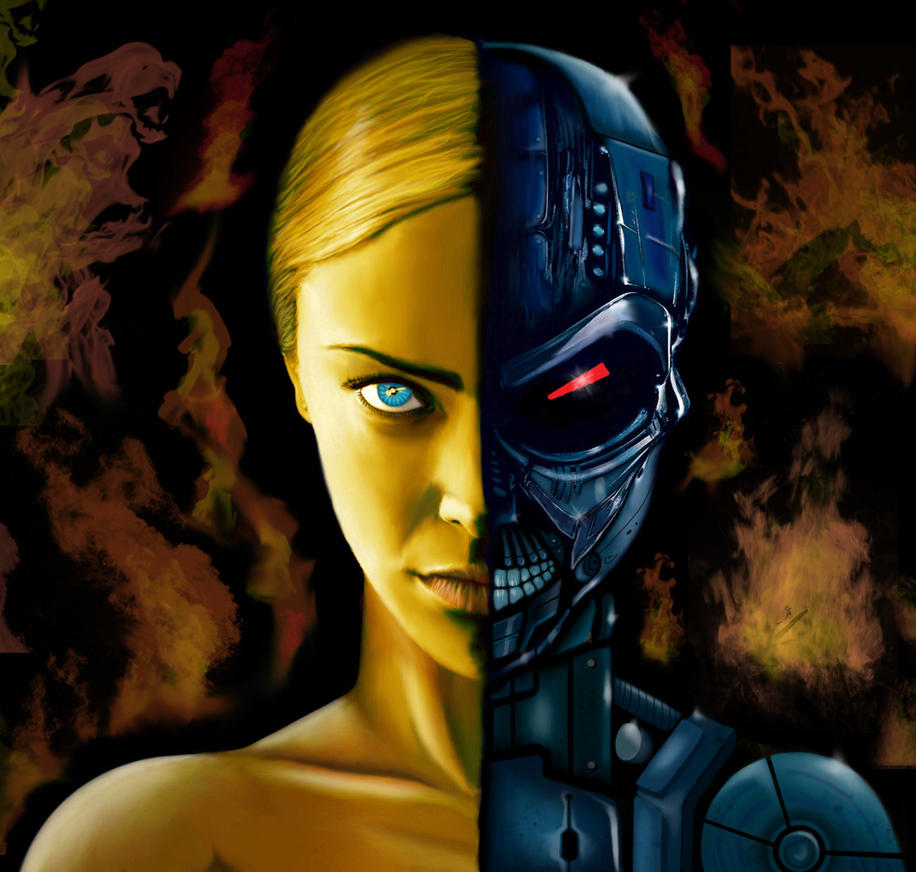Sic transit gloria mundi

OUT OF CHARACTER INFORMATION
Intent: To sub a line of specialised assassin droids.
Image Source: Here. 'T-X' by RawGraff. Found on creepinowl.deviantart.com.
Canon Link: N/A
Restricted Missions: N/A
Primary Source: YVHa-60a. Using this droid submission as inspiration. ARD X-1 Human Replica Droids, Archangel Processing Machine
Manufacturer: Archangel Research and Design
Model:
Production: Semi-Unique
Affiliation: Archangel Research and Design
Modularity: Appearance, height, gender, appearance and programming are all changeable. Clients can request practically anything human or humanoid, including near perfect replicas of others.
- Material: Durasteel, high strength polymers, organic coverings, Specialized Vonium-Pyronium Circuitry
TECHNICAL INFORMATION
Classification: Third/Fourth Degree. HRDs straddle the line between combat and human interaction models.
Weight: Varies but usually 100kgs.
Height: Varies depending on processed individual. Standard model is 1.8 metres.
Movement: Bipedal
Armaments: Small vibroblades concealed in palms. Aside from this, the units have no inbuilt-weapons and rely on their strength. They are programmed to utilise a wide variety of ranged and melee weapons though. Also programmed in various martial arts.
Ionization Buffer
Gabonna memory crystal
Droid parabolic guide
DNA tracer
Probability guide
Built-in Communication Systems and Voice-Assimilation Module
HUD with tracking and targeting systems. Visual processing modes; infrared, heat, low-light, 20x magnification.
Vocabulator capable of mimicking any known voice and speaking several thousand languages. Invisible communicator with audio or text broadcasting to other units on the same planet. (Secret holonet transceiver used by Archangel to control or monitor units.)
SPECIAL FEATURES
All internal circuitry is made out of Vonium and Pyronium
Able to be disguised as any humanoid
Highly advanced combat, infiltration and assassination protocols
- Sophisticated anti-malware software and anti-slicing protocols
- The unit is adaptable and able to learn as it progresses, making it more dangerous.
Strengths:
The unit is optimised to protect the most crucial components of droids, namely their circuits. To this end, this design utilises a combination of Pyronium and more commonly available droid components. This provides excellent protection against EMP, electricity and ion attacks, the most common hazards a droid faces. Indeed, the attacks that would normally harm the machine empower it. This is because the energy is absorbed by the Pyronium and subsequently diverted to specialised converters, to feed its hardware and software applications.
- Anti-malware protocols and anti-slicing countermeasures make it more difficult to tamper with the units' programming, overwrite their core functions or otherwise turn them against their controllers.
- Incredibly strong. Their capability is usually upwards of double a comparable human. For a short period they can lift triple the weight. As they also feel no pain they can use their bodies as weapons or to smash through barriers.
- Extremely resilient. An HRD can take several blaster bolts to the head or chest before the unit fails. Limbs can be severed and severe damage done, but it will press on regardless.
- Skilled Infiltrators. HRDs are designed to look, act and seem human. They can blend into social situations, using their abilities to get close to their targets.
- Relentless. HRDs are assassins and combat droids of a highly advanced level. They know neither fear nor any other emotion except when they mimic it. They are implacable and ruthless.
Absorptive qualities have their limitations. Being within the radius of a big EMP or ion bomb is still hazardous.
While the skeleton is very resistant to damage, their organic overlay is not. In an infiltration situation, damage to it will easily break their cover, as it will expose the metal beneath their synthskin.
The eyes remain a weakspot, as naturally these are less protected, even if there are plates behind the eyes. Thus it is possible to blind or disorientate the units by targeting these areas.
- Not invincible. HRDs are powerful, but in the high tech modern galaxy they are not invulnerable. Blaster bolts to the head or chest can disable them, as can powerful explosives and especially lightsabres.
- Detectable. HRDs are not infallible. Anyone able to detect their weight will find it off, whilst someone able to do a deep scan will notice oddities. Finally, a perceptive Force user could sense that something is off as the machine beneath is not truly living.
- Not Human. HRDs can look, act and seem human, but they are not. Even humans processed into machines soon lose the ability to actually empathise and ‘be’ human. While they are good at fooling in the short term, their inherent ‘wrongness’ comes through and someone in daily contact every day will eventually realise they are not as they seem.
DESCRIPTION
Droid design has advanced a great deal ever since the Trade Federation unleashed legions of mass produced, comically stupid B-1 battle droids upon the peaceful world of Naboo - and ended up being defeated because a six-year old managed to blow up their droid control ship. Cheap, expendable automatons continue to be utilised, though they are generally more intelligent than their archaic, 'Roger, Roger' chanting cousins. However, specialised, intelligent death machines have increasingly taken their place, among them HRDs.
Even a failed droid revolution called the Clockwork Rebellion has been unable to halt technological progress, despite the evident dangers. Perhaps thinking machines have become so essential to modern society that many sentient beings are unable to imagine life without droids making it easier for them by performing tasks they don't want to. So far, militant droid supremacists have been unable to overthrow the organics and turn the Galaxy into a well-ordered, mechanical dystopia where the space trains run on time and organics are processed. So far.
One thing that has remained enduring for droid designs has been their vulnerability to the standard machine weaknesses: Ion, electricity and EMP. Even the most sophisticated HRD with a Phrik Endoskeleton cannot escape this hazard, though a Copper Faraday Cage and standard droid add-ons such as Ionization Buffers can help mitigate it and stave off the inevitable shutdown caused by an ionic detonation.
Archangel Research and Design, devoted to 'betterment of the Galaxy through technological progress' decided to do something about this. Obviously the best way to do this was to build an elite killing machine that could serve as a tool of murder and destruction. Thus the Cherusker came into being. The design of this model focuses on protecting the most essential component of a droid, its software.
To be precise, this covers its circuitry, memory core and software protocols. To this end, the extremely rare, absorptive alloy known as Pyronium is utilised, reinforcing the chip and core components. This is combined with the incorporation of an Ionization Buffer and a Copper Faraday Cage. Extremely powerful ionic detonations could still impair the unit, but the core of a droid is not the chassis it uses to move. It is the circuits and memory software that allows it to move, think and act in the first place.
Compared to these modifications, the actual body is more conventional in nature, foregoing a Laminaium or Phrik body. It resembles that of the standard HRDs produced by Archangel. As with all HRDs, these units are based on the Guri method of construction. Their skin is cloned humanoid flesh from the original template. However, appearance, height, gender, appearance and programming are all changeable. The blood and other organic materiel is synthetic, while the skeleton is made out of durasteel.
The HRDs are similar to Moira and Maelion in most respects. The humanoid exterior conceals a machine. The creation process is the same as with the baseline HRDs, using the Archangel processing machine. Thus their droid brains are based on an organic mind, which is scanned and mapped by the aforementioned device. The same process is utilised to copy the physical appearance of the host. As with the baseline model, being based on a sentient mind makes this unit good at blending in among organics. This enhances its ability to act as an infiltrator. They are endowed with impressive physical strength and programmed to utilise a variety of melee and ranged weapons. Agile, strong and intelligent, they are lethal killing units.
Prolonged blaster fire will have an effect. Explosions and heavy blaster weapons such as e-webs, rotary cannons can cause significant damage. Its lightsabre resistance does not exceed that of a well-crafted suit of personal Durasteel armour. The design philosophy behind the unit reflects the truism that a droid is not the Chassis it uses to walk in and interact with the world around it, but the software and memory circuits that enable it to act in the first place.









